How to Design a Resume That Stands Out
Resumes are everywhere. They can be good, bad or downright embarrassing. But one thing is certain — if you want a job, yours must stand out in a good way. The design needs to reflect your personality, and the information needs to be organized, relevant and spot-on.
More often than not in today’s job market, you may even have several versions of your resume; one tailored toward different types of companies, one for potential clients or another as a showcase piece in your portfolio.
A Little Background
I dealt with resumes for years when I was a manager in charge of hiring designers. I still look at quite a few now as someone who works with a group of college media students.
So I’ve seen it all. Resumes that still include “dummy text” from the Microsoft Word template (a definite “don’t”, by the way!), resumes that were obviously bought from a designer or firm (it’s easy to spot the same design twice), and resumes that are unique and tailored to the individual and their style and skill set. These are always a pleasure to see!
A good design resume gives you a glimpse of the designer before you even open the portfolio.
Personalized resumes are my favorite by far. A good design resume gives you a glimpse of the designer before you even open the portfolio. How well do they use type and color? How well is information presented and organized? Are the thoughts and phrases logical and relevant? Does the resume look good and make me want to look at the attached clips?
Especially in a market with so many people clamoring for a handful of positions, your resume is your visual first impression. It is the thing that “gets you through the door,” or to the call-back pile. So it has to be good.
The Good
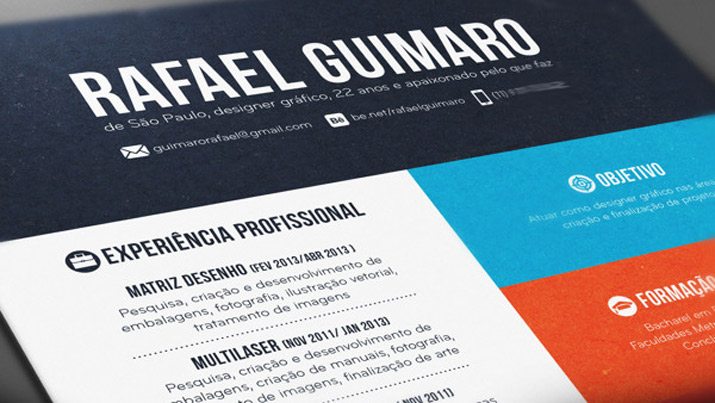
A good resume reflects the design talent and style of the person who created it. Use it as a place to showcase your talent. And don’t limit yourself to paper. Every designer should have a resume that includes both paper and digital copies. These pieces should mirror and complement each other, using similar color schemes and fonts for an overall aesthetic and making sure that each references the other.
The best resumes are simple. Your resume should look like it was created by a designer, not a bank teller. Use your skills to create a document you can be proud of.
Things to Include
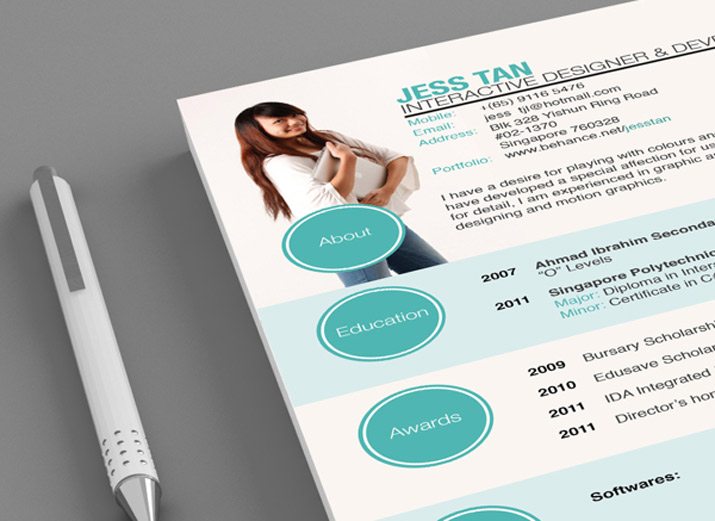
Organization is vital when it comes to catching the attention of a hiring manager or potential client. Here are the key pieces of information many are looking for when it comes to hiring a designer:
- Name and contact information: This should be plainly stated and easy to read. At just a glance, who you are should be visible as should your phone number, email address and website. Avoid funky typefaces or colors for this information.
- Qualifications: This section can be organized in a number of ways but make sure to include a short statement that identifies who you are in relationship to the position. Are you a stellar illustrator or web designer? Are you a master of typography or infographics? Sell your skills in a sentence or two.
- Work experience: A work history does not have to include every job you ever held. List relevant positions and experience. Keep descriptions short and make sure to include dates of employment.
- Education: Depending on your experience level, college education and special training is typically enough.
- Special skills: This is a great place to list skills specifically related to the job. (Using Microsoft Word does not count.) Note software applications, social media skills, writing ability, etc.
- Portfolio and references: These are not part of your resume per se. They are additions to it. But your resume should include a link to this information, whether it is attached to the document or not. As a designer, you are expected to show your work; make it accessible.
The Bad

You are a designer. Using a template is a giant red flag.
If you are looking for a job that requires creativity, submit a resume that is creative. The perfect resume for a secretary may follow the format, but as a designer you need to showcase creative ability.
One of the most embarrassing resumes to come through my hands was an obvious template. White paper, single column, Arial typeface in a descending order of size from top to bottom of the page. And across the top – “FirstName LastName.” That’s the kind of error that costs you a job.
I’ve also seen resumes with misspellings, typos and even incorrect contact information. More job killers. Add to the list incorrect links, QR codes that don’t work, or portfolio information that is dated or does not reflect recent work.
While a gimmick can be a good thing, don’t go overboard. Don’t send out your resume printed on a cardboard box (yes, I’ve seen it) or on tiny slips of paper.
Tips for Success
Think about your digital footprint before you mail (or email) the first resume. Make sure every part of your persona matches the vibe your resume is supposed to portray.
Think about your social media profiles – they should be related to the position or kept private. Google yourself (potential employers will), and make sure you are happy with what you see.
Avoid generic descriptions and words. Make it easy for hiring managers or clients to know you. Make them want to call you for more. Phrases such as “team player,” “experienced,” or using space to mention that you use common software applications is a waste of space, and a given. If you list these things, what are you leaving off?
You also do not need to mention outside interests or hobbies unless they relate to the job. Keep personal information personal.
Edit, edit, edit. Every word on your resume should be accurate, relevant and purposeful.
Keep your resume to a page or simple website with only a handful of links. The intent is to showcase your best work, not overwhelm. Pick out your best stuff, update it regularly and forget the rest.
Tailor your resume for the job. Only as a recent college graduate did I write a resume, print 100 copies and mail them all out. Every resume should be designed around the position you want and for the person who can help you get there.
7 Creative Resume Examples
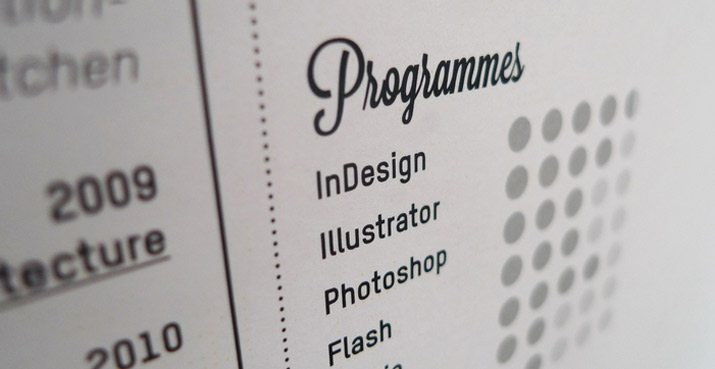

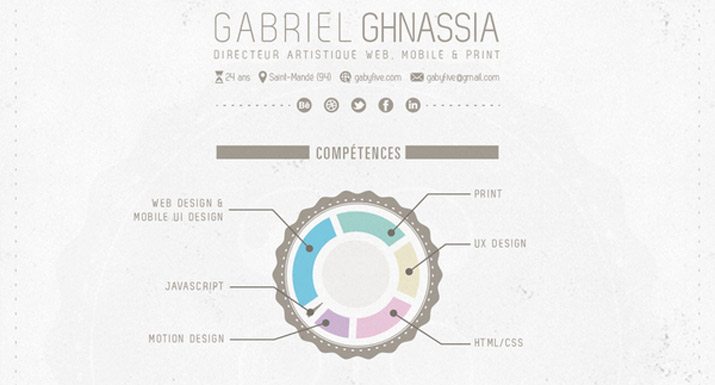
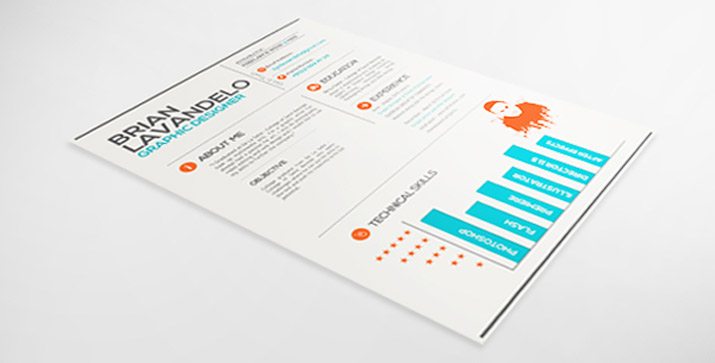
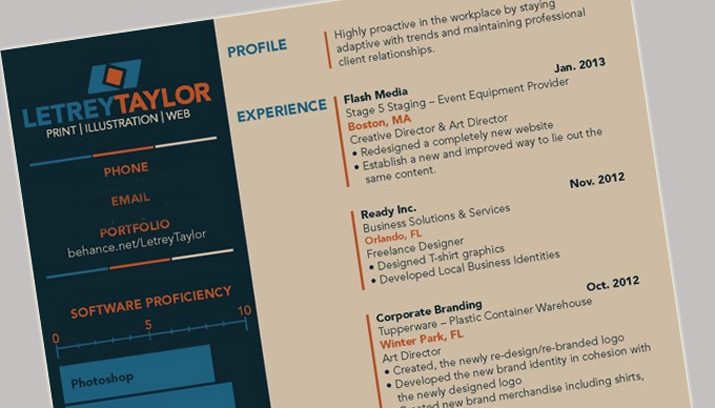

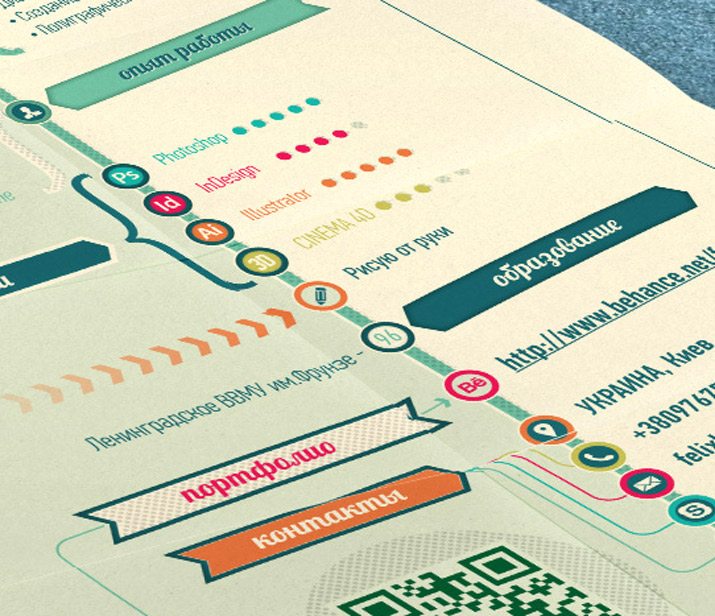
The best resumes to ever cross my desk were those that really showed creativity.
Years ago, I was blown away by a designer who structured a resume to look like the publication they were applying for a job at. Every part of the design was spot-on, and the document jumped out of the pile quickly.
Color always makes an impact as well. Just make sure the printing is sharp. If you plan to print resumes at home, opt for a thicker colored paper for the same pop.
Add a simple gimmick. From headshots, to flowcharts, to icons with a flash of color, make your resume stand out with something unusual. Part of your job is to market yourself and your ideas. Treat a resume like you would a design project if you were already employed.
Conclusion
The best resume is a reflection of you as a designer or developer or writer or whatever title you are trying to attain. It should be organized, eye-catching and available in multiple formats (print and digital).
Treat the resume as a part of your overall portfolio and as a piece of the interview process. Make it work for the position you want and keep the resume fresh. It is the first impression a potential client or employer will have of your work.
Image Sources: Elliott P., michaeln3, Pernille Posselt, Chen Zhi Liang’ Gabriel Ghnassia, Jess Tan, Rafael Guimaro, Brian Lavandelo, Letrey Tay-lor, Blazej Smolarek and Felix Baky.